Lung Soothing Herbs for Wildfire Smoke Inhalation
In true 2020, (and Mars retrograde Square Saturn) style, wildfires blaze along the western states. I have been doing lots of herbs and other things to help soothe and protect our lungs as we surrounded by wildfire smoke, and I’d love to share some of them with you.
My heartfelt condolences go out to the people who are experiencing loss and displacement from the fires.
Here in Portland, we have been lucky. No threat of fire except for one fearful day during a eerie rare wind event. Just smoke.
The wind brought along a feeling as if a blizzard was coming. Being from Minnesota, I have that feeling ingrained in my bones.
But instead of mounds of snow, the threat of blazing fire was riding along the tips of that wind.
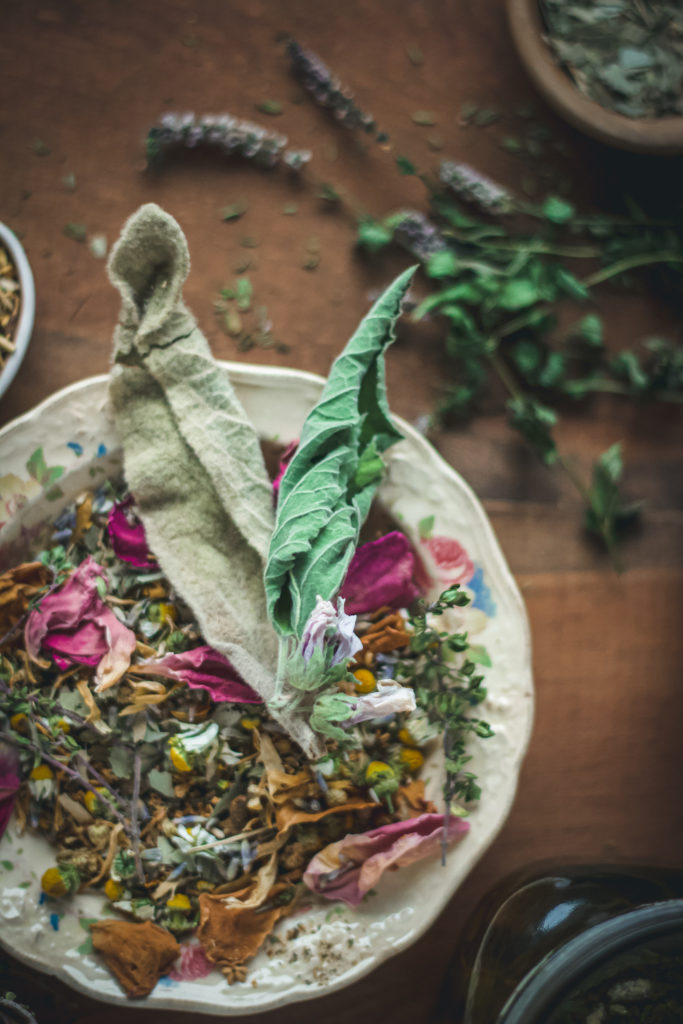
It is worth it to improve the air of your home – especially for kids
It may not seem like it makes much of a difference, but any little improvements add up. Same goes with smoke inhalation prevention when you go out of the house. It all contributes to less of a burden on your lungs and detox pathways.
Smoke is indeed much more detrimental to young, growing lungs. Smoke inhalation can stunt growth of the lung structures and result in long term issues.
I grew up with a parent who was a pack a day smoker, in the house. My lungs (and ears, and throat, and muscles) definitely had a hard time. I was the worst runner of my entire class, maybe even in my entire school. I could hardly run for a minuet, my lungs couldn’t handle it.
Although cigarette smoke is not exactly analogous to wildfire smoke, there are some similarities. And regardless, smoke inhibits children lung function.
Environmental strategies for mitigating wildfire smoke inside the home
If you have an air purifier, use it!
If you can somehow buy one locally, or get one delivered, or somehow arrange funds for one (credit card, family sending cash, Go Fund Me for those with one already in place), please do. I have heard of family members from other parts of the states buying an air purifier and overnighting it to their loved ones in Oregon. It is costly to do this, for sure. But worth it.
There are examples floating around about how to tape a filter to a box fab. It’s a cheap and easy way to get a decent amount of filtering in your home.
My husband Rob heard from friends about how much of an impact an air purifier can have on indoor quality.
His friends had an air purifier with an Air Quality Index read out on it. One of the first nights of the smokey days, his friends did NOT have the air purifier on while they slept.
When they woke, the machine said the index was 115. Not terribly healthy, especially indoors.
After just 15 minutes of running the machine, and turning on their kitchen range hood fan which had a filter, the index was down to 15.
15 is healthy, folks. 115 is not.
This was when the Air Quality Index outside was around 230-250. It has since been 430 – 530, which is VERY unhealthy for everyone.
There have been bigger fires in the States. One huge one was over a hundred years ago.
But since the electronic monitoring equipment has been invented there was never a reading exceeding 400 or so…until the last week. The engineers of the devices have had to add hundreds more points to the scale.
In the past few days, it has been in the 500’s here in Portland and surrounding ares, and even 600’s in some places.
Sometimes it smells like you are standing 5 inches from cigarette smoke that’s blowing directly at you. Other times it smells like thick campfire smell. Occasionally it smells really rank, like a one of those field parties in rural Wisconsin after some drunk people throw a tire and old painted picnic table on the fire.
I have noticed that my ability to smell the smoke has become more sensitive as I approach ovulation. I use that good sniffer to direct the plugging of even more cracks 🙂
Wear an N95 Mask outside and in the car
Add a soft COVID mask over. The N95 has a port to help expel air, so it is not COVID safe.The soft COVID style mask can help protect the n95 mask from picking up the stench of going outside.
Change clothes and shower after returning home
Wow, clothes get stinky, fast. Even within the 5 minuets it takes to take out the garbage and compost. After returning from a time running errands, Rob had to shower.
Keep dust down in the house, avoid blowing too much air around, but do use fans with HEPA filters
The recommendation is not to vacuums, as it expels too much air.
Yet a furnace fan with a HEAP filter is worthwhile to run. We made a trip to the local heating and cooling place we bought our furnace from a couple of years to get a new furnace filter – totally worth it.
I have slowly been sweeping and moping and wiping down surfaces. I tie a cloth to the broom, spray it with homemade cleaner and wipe down the walls, ceilings and baseboards.
The kids loooooove to help with cleaning the walls, doors and baseboards. I give them a couple of damp rags, and let them spray the cleaner just a little bit – its homemade so I know what’s in there (borax, vinegar and dish soap). This will keep them cleaning side by side with me for almost an hour.
We sing cleaning songs when we clean, which are random things I make up to tunes we know. Mostly they have instructions for the cleaning process, and in giving thanks in how great it feels to have a clear, fresh space we feel safe and comfy to breath in.
There is something so deeply therapeutic to caring and cleansing one’s space. It is calming to our brain and bodies and to our spirit, too. Home tending is an ancestral act, as well. I am so thankful to have a safe and sound home. Not everyone is able to with with a home or a safe home, and some have burned down and many more are dislocated.
Simple home tending gives me the chance to revel in this blessing. I believe it is the precise type of physical coping we are designed to do. Keep busy – be productive – feel like you are helping – but not go crazy trying to do it all.
Water seems to help freshen the air
There is some evidence that standing bodies of water attract or trap smoke particulate, thus cleansing the air. This could be leaving a few inches in the tub and sink basins, or having tubs or bowls of water scattered around the house.
Running a hot shower feels nice to dry air ways, that is for sure. We do that a few times a day, and play in water and take baths daily.
Tape, seal and plastic windows
Use painters tape around all the edges of the window sills. For our old house, it is very important to tape to seal between the window frame and the wall. This has made a huge difference for us.
Plastic as many windows as you can. It is easy enough to get window plastic sets in the mail for delivery.
It is crazy and scary when I can feel it pour in to our house through tiny cracks in the windows and window frames.
One of our neighbors who was leaving town brought us their fish to watch. They were absolutely shocked at how non-smokey our house was compared to theirs. This is worrisome to me – how many people are living in smokey homes?
Limit your presence in smoky smelling rooms
The least smelly rooms in our house are the kids room and the kitchen. So we try to stay in there as much as we can.
We have moved an extra twin mattress to the kids room, where I sleep at night. I feel okay about sleeping in our slightly more smoky bedroom, but the kids get up at night and crawl into our bed, and I do not want them to sleep out there.
Yes, I bring them back to their room, but that takes a lot of time and energy to do this in the middle of the night, every night. This is NOT the time to try to train them to sleep in their room. It is a time to conserve energy and be as calm as possible. Waking at night is depleting. Plus the kids are worried, even if it’s subtle, and need us more than ever.
To get the best quality sleep, I sleep in their room and can more easily put them to sleep when I’m close.
Herbs, Supplements and Diet Recommendations are always an individual thing
As always, I want to acknowledge that each person reading this will have different accessibility to bulk herbs, herbal products and supplements, different amount of energy and time to dedicate to their body and mental-emotional-spiritual life, and different comfortability levels with taking and making herbs and supplements.
We are all different people with different bodies, concerns and presentations. Herbalism says, “treat the person, not the disease”, and this is of course true right now as well.
Wildfire smoke has its noxious signature and nature. But how this experience effects us will be different.
Some people are not bothered by the smoke per se but are very stressed emotionally and physically by the burden of being indoors. They feel trapped. These people need herbs mainly focusing on the nervous system.
Someone who is concerned about their lungs will need different herbs – the soothing, coating, protective demulcents, and general lung tonics, for example.
So read this as primarily an example of what you can do. As inspiration. However, I think the supplement recommendations will be helpful for just about everyone.
Basic Supportive Supplements for dealing with wildfire smoke
First Line Supplement
- Vitamin C
- Zinc lozenge or tablet
- Magnesium
This next part of a longer term, ongoing neuro-endo-psycho-immuneology system wide approach.
- Vitamin D – Vit D is more like an essential hormone that we acquire externally. Vitamin D helps turn on the immune system, regulate mood, and so much more. Plus we are not going outside to get sun – that’s for sure. We as a whole are deprived of Vit D.
- Probiotics and fermented foods – Again, essential for long term immunity and whole being well being. This will sound extreme but I believe it to be true more than we know: if you have ever taken antibiotics, you may continually need to ingest probiotics.
After 21 days the probiotics can start to take a hold and root within the gut, at which point the immune system can begin to be normalized. Prior to 21 days, the probiotics are still contributing to a balanced gut immunity response as they pass through. We really need to tend and culture the gut over a long amount of time.
Our whole culture is lacking in helpful, protective microbiota strains due to the use of antibiotics, the lack of exposure to bacterial seedings from birth to lack of dirt contact and food skins, fermented foods, fresh air (fresh air can positively alter the microbiome of a room – there is interesting research about this being tested in hospitals, search for the topic for some neat podcast/radio shows),and the continual use of cleaners and sanitizers.
- Essential Fatty Acids – Because I am a omnivore I use Nordic naturals fish oil. One can find veggie varieties to suit your diet. EFA are so important for mental health because the brain is made of fats, after all. EFAs also regulate the immune response and mitigate inflammation by allowing the lipid bi-layer of the cells to flow smoothly.
- Methylated Folate, B12, B6 – If you suspect a methylation defect, then a Methyl B is a must. Raw veggies and lots of brassicas are also essential.
One of my kids had a tongue tie, and the other had a minor lip tie, so they have a methylation defect and my husband and I probably do too (however, we could be carriers – it’s hard to say exactly without testing). Methylation defects are a big rabbit hole to jump down, but it is worth looking into if you suspect it. And getting a methylated folate is cheap and easy.
Other Supplement Ideas
If you can afford it/have access/have the desire, these are great additions
- Selenium
- NAC – N-acetyl cysteine helps with antioxidant glutathione production
- Some sort of OPC’s, high flavonoid supplement. Frozen blueberries do fine, too
Boxed herbal Teas
At the grocery store, check out the herbal tea standbys of Traditional Medicinal or Yogi Teas for the throat and lungs. They often have names like Breathing Time, Throat Coat, Breathe Deep.
The throat teas feature Licorice, a soothing demulcent herb, avoid if you have high blood pressure.
The breathing teas often have Thyme, which is wonderful lung opener, as well as Eucalyptus. I often use this herb when there’s some sort of pathogen that led to the lung irritation, infection or cold, but Thyme is still a good lung soother when there is not a pathogenic factor.
Get a couple boxes of these teas – or more if you are able- because those little teabags only make one 8 ounce cup of mild tea. I like to steep 4 tea bags in 2-4 cups of water, to make it stronger.
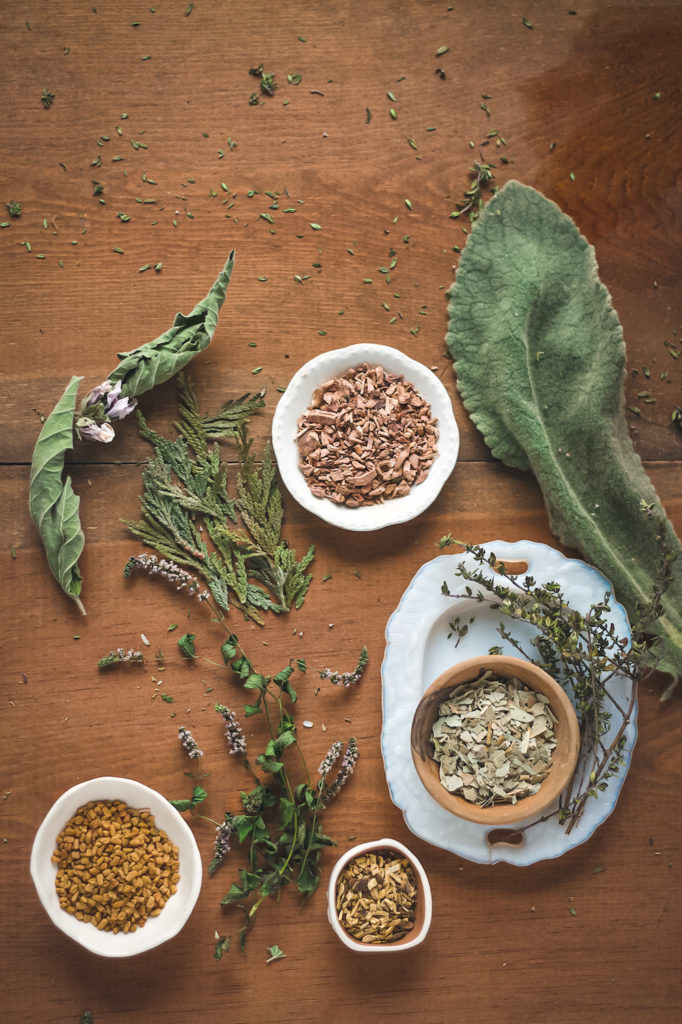
Herbal supplement ideas for lung support
I was getting little stir crazy a few days ago when it was smokey but not terribly bad. So I made an escape by going to the natural food stores to see what sort of widely available products might be helpful for lung health.
As to be expected, most of the specific lung oriented products were for respiratory infections. Many had expectorant, anticatarrhal, antitussive and anti-infective herbs in them that I wouldn’t necessarily consider for smoke inhalation.
For example, I would not get anything with Osha or Lovage/Ligusticum grayi – they are like a fire extinguisher to an infected, overactive respiratory system, often with a lot of sticky cold-damp phlegm. Now we have an overabundance of warm-dry coming in from the external environment. I also avoid these herbs as much I can since I am reducing the amount of wildcrafted, native herbs in my practice, and Osha in particular has yet to be successfully cultivated outside of its specific bioregion.
I would not get formulas with Lobelia, Pleurisy Root, or Wild Cherry unless I thought they were called for. Those are great herbs and they may indeed be indicated – I am drawn to Pleurisy Root, for example, for a potential lung tonic syrup. Yet I would not use the stronger lung herbs unless I knew of the specific indications for an individual in need.
The anti-infective part of the lung formulas found on the shelves are not necessary. The immune strategy right now is general Wei Qi supportive, not fast adaptive immunity to mobilize against a pathogen.
So that left me looking for herbs within products that were gently supportive to the lungs, like lung tonics or mild to moderate respiratory herbs.
Two such products were:
With Chicory inulin, honey, sage, aloe, myrrh, peppermint and cinnamon essential oils. When I got it home I realized it had a tiny bit of sugar cane – generally a no-no for me.
There is also the same formula in a spray bottle here.
I was drawn to these formulas because they have Aloe and Myrrh which are two of my favorites for mucus membrane support.
Aloe does this through creating a soothing coat and modulating immunity.
Myrrh through creating a protective layer and deflecting the outside from coming in (or at least that what it feel like to me).
Another coating, protecting, soothing herbal type product I was looking for was Propolis. Propolis is a bee harvested tree resin that, of course, is not vegan. In that case I’d use Myrrh in its place.
Same as the other two above, Propolis is very much anti-infective – and I said I wasn’t looking for that, so why am I mentioned these?
All three are soothing and protective firstly, and they all have an affinity to the throat and upper airway. They are like a shield to the throat to check irritation at the point of contact. They keep up the integrity of the throat tissues.
A couple other throat herbs
Since the smoke is coming through the upper airways, and the tonsils immunicologically “taste” everything that passes by, I have been focusing on the throat with my family.
Sage is a throat specific plant.
As is Red Root.
I was hoping to find more options for a gentle throat spray in addition to the Gaia one and the Propolis one above. Indeed there were plenty of throat sprays, but there were also stronger infection fighting type herbs in there, and for that sake I did not think the throat sprays were ideal.
In the end I think someone could take the Gaia throat spray and add in some Red Root and Propolis tincture – or anything that was indicated for you.
Herbal Strategies for Lung Soothing for Wildfire Smoke Inhalation
I’ve been thinking a lot about the herbal options for the lungs. Thinking and trying. Tasting and steaming (I love steams for the lungs). Much of the time I am treating serious lung stuff – just last year I had pneumonia for the 5th time.
I am considering these points for Wildfire Smoke Inhalation
- Lung Tonics: what helps the lungs function; often demulcents
- Lung Protectors: what keeps them protected from particulate damage
- Lung Restorers: what helps them feel better when strained and
- Emotions and Stress Response Soothers: how to emotionally address the lungs

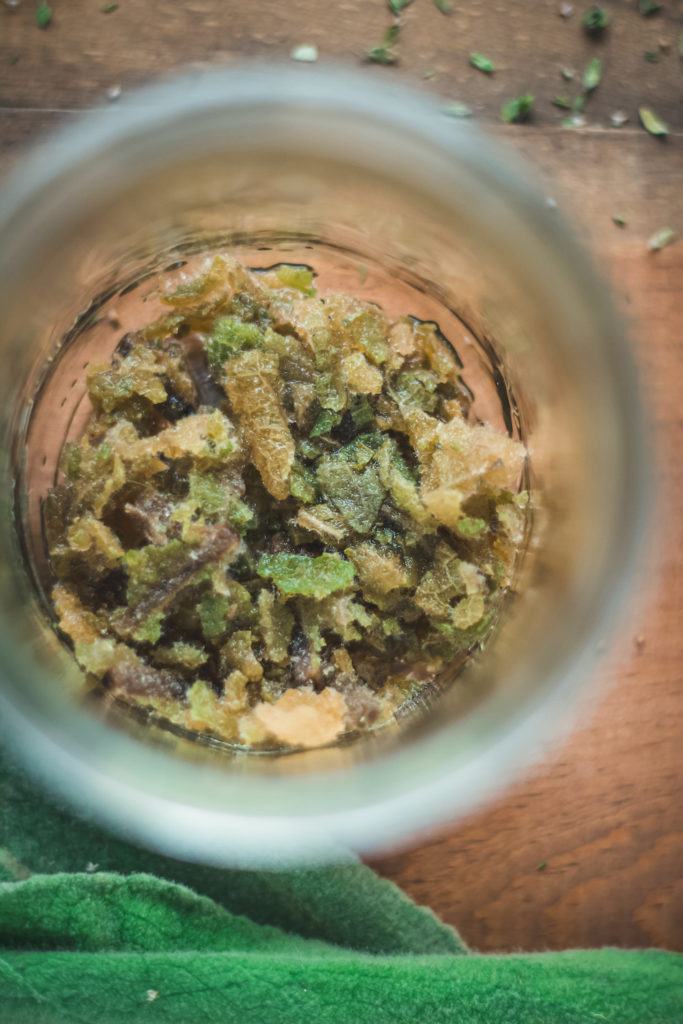
mullein tea 
marshmallow root tea

Lung Tonics
- Mullein – Verbascum thapsus
Relaxing expectorant, demulcent, antispasmodic, vulnerary, tonic.
“Mullein is a very beneficial respiratory remedy, useful for most conditions and ideal for toning the mucous membranes of this vital system. The herb reduces inflammation while stimulating fluid production, thous facilitating expectoration.” Hoffmann, 592)
- Coltsfoot – Tussilago farfara
Expectorant, antitussive, antispasmodic, demulcent, anticatarrhal, diuretic, tonic.
As a mild herb with neutral tendencies, Coltsfoot has a tradition in Western herbalism to be used for children, and in Chinese medicine it is the “for any type of cough” herb. Coltsfoot can be given for chronic or debilitated coughs and respiratory conditions.
- Marshmallow – Althea officinalis
Demulcent, emollient, diuretic, anti-inflammatory, expectorant, anti-infective, tonic.
Marshmallow is a very soothing plant for time when we feel hot and dried out. Specifically, Marshmallow has a affinity for the lungs, the kidneys and urinary system, the digestive system, the skin, and the mucous membranes.
All of these herbs are soothing to the airways and mucus membranes. They are all helpful in all sorts of coughs, true. And yet they are kind of neutral in their temperature, demulcent, and have tonic qualities that are supportive of the lungs when they are weak, debilitated, or burdened.
Tonics is a lovely old timey sounding word that simply means the herb supports the organs and helps them get stronger or more functional over a while of taking them.
Part of the reason these three lung tonics are helpful is because of the soothing mucilaginous nature: the lungs need a healthy base of Yin to flow freely and to express their full range of respiration. Another demulcent in this category is Plantain.
Lung Protectors for Preventing Particulate Damage
As much as I love the lung tonics Mullein and Althea, I felt like the remedies and teas I made during this week of wildfire smoke needed something else. For one, I wanted a refreshing, aromatic flavor.
Aromatic plants are uplifting to the spirit. They awaken the mind and senses. And aromatic herbs often end up relaxing the nervous system and set a nice chilled-out tone for our being. For just a moment, we get lost in their aroma, flavor and in the sensation.
Because so many aromatics raise up energetically, they have a cleansing, purifying and freshening nature. Indeed, many are active against microbes.
So I started adding refreshing volatile herbs to steams, foot soaks, baths and into teas.
- Chamomile
- Thyme
- Mint
- Melissa
- Lavender
- Catnip
- Sage
- Eucalyptus
- Western Red Cedar
- Pine
- Elderflower
- Rose
- Tulsi
Directions for a Respiratory Support Steam Inhalation
- Bring a stock pot of water to a boil.
- Add about 1/2-3/4-1 cup of dried herbs and stir briefly to integrate into the water. Cover. Let steep about 20-30 mins.
- Set up a place to steam, and place a thick towel on a table to place the pot upon.
- Place your head over the pot as you lift the lid. be careful – the steam can be very hot.
- Cover your head with a bath towel and plug any places where air escapes as you sit. Let the condensation drip off your face, receive the volatile oil rich steam in your airways. Taste it in your mouth. Feel it in your chest.
- Steam as long as you can do so comfortably – 20 mins is fabulous. Notice the air coming in and the breath going out.
I save the steam and do another time within the next half a day or so, but that is up to you.
Use any aromatic herbs you are called to.
Oregano and even their milder sweeter cousin Marjoram is a little too hot and drying right now.
And although I love Rosemary, I also thought it might be too drying for me right now. Soon it will be the Pacific Northwest rainy season and I’ll use all the rosemary I desire.
I haven’t used Monarda for a while (I have a hard time growing them), but perhaps they would be too hot for me too? The spices are too irritating for the mucus membranes.
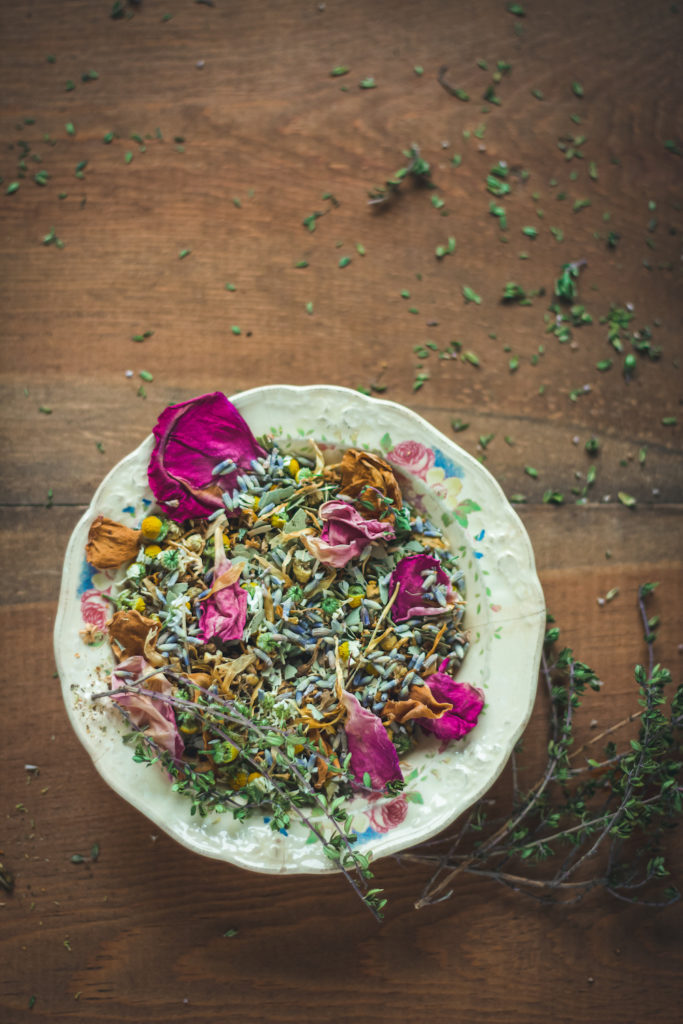
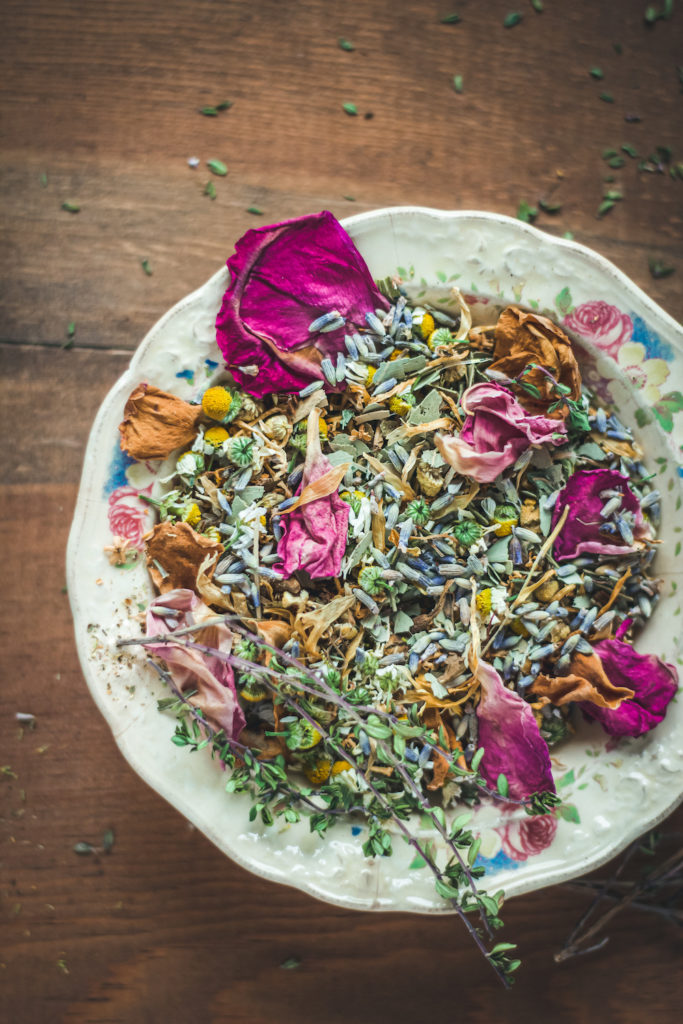
Relaxing and Lung Supporting Nervine Foot Bath
An old hydrotherapy technique for mitigating headaches is to take a foot bath. Essentially during a foot bath, the energy of the body is drawn down, grounded.
Foot baths are one of my favorite ways to take herbs. External applications enter into our immune and nervous system so readily (which I talk about on in this Lavender Oil Multi-fractional Extract article). Literally, the skin “eats it right up”.
Sometimes I use foot baths as my main medicinal medium. Recently I had a dream where some wise person told me about an herb I really needed and then said just take it as a foot bath, already (the herb was Mugwort, and the foot bath was lovely).
I love the Mint family in foot baths. During the smoky days, I have done a lot of foot baths with fresh Mint, Skullcap, Thyme and Sage with some dried Mullein.
I like to use plants from the garden that have gone to seed and I wont be harvesting for tea because they are a little past their prime. I add them whole, like a 9 inch long branched out stalk. It is a lovely sensory feeling to roll my feet through the stalky plants.
After a couple of those fresh mints plus mullein, I added in Eucalyptus and a bag of dried Lemon Balm I wasn’t using for tea anymore. Very, very relaxing in that Minty blissed out way, plus I believed the Mullein helped bring the formula into my chest, because I could taste the herbs deeper on my breath than normal.
Do you have old tea that you aren’t going to sell or give out anymore? Foot bath it! Moths got your Rose harvest? That’s right – perfect foot bath as long as you don’t mind moth particles in your foot bath.
All plants enter the body via topical applications, not just aromatic ones. Yet I like to add in aromatic plants because they seem to move the other herbs in the formula up and out and around. They escorts the formula in and around, since, from a Chinese perspective, they have a relationship with the pores.
Directions for a Foot Bath
Basically, do what you do for a steam inhalation, but make sure the pot is large enough for your feet to be submersed comfortably. I prefer to use a canner (which are also great for hydrosols).
Sit for 20 minuets. Be careful not to burn your feet in the foot bath. But also do not have the water be just warm. It should be as hot as you can stand. Anything less is not as satisfying and dulls the experience. Of course there are cool or cold foot baths, too which you may choose to do as well.
Submerging my feet in the hot water is a ceremonious event. I often start with water a temperature I can submerge my hand in easily but just for a few seconds. The feet are a lot more sensitive to heat, so it takes about 5 minutes or more of trying before I can get them under. Start by just barely placing the bottom of the foot on top of the water, because it is tougher than the toes.
After about 5 minutes of a Mint family and Friends foot bath, I am ready for bed. I feel like I have taken 2 melatonins (if I take melatonin, I usually only take a half) and have had hot bath followed with a full body massage.
I use the foot bath a couple of times before I stain it and add it to the kids bath (if a foot bath is for some sort of infection I would make a fresh batch every time). Those herbs keep giving and giving.

Lung Restorers: Gentle Aromatic Respiratory Herbs to Help the Lungs Feel Nice
As I talked about above, my favorite gentle aromatic herbs for steams, foot baths, herbal baths and teas have been:
- Chamomile
- Thyme
- Mint
- Melissa
- Lavender
- Catnip
- Sage
- Eucalyptus
- Western Red Cedar
- Pine
- Elderflower
- Rose
- Tulsi
- Citrus Peel
In a tea, I use a little bit of Eucalyptus, Thyme, Mint, Citrus Peel and Sage as I do not want to overly dry the lungs, like less than a teaspoon per pint of tea I am steeping.
Thyme, Mint, Sage, Eucalyptus, and Citrus Peel move things around, they are dispersing. If you are low on Qi of the Lungs or in general, they can deplete the Qi. Not a problem at all when using these for a little flavor.
Chamomile, Thuja and Rose and probably Tulsi will not dry the lungs quite a much.
If I was addressing some sort of lung infection, I’d add stronger aromatics like Elecampane, Yerba Santa and Angelica archangelic. These can be used if the external Wind-Dryness has gone deeper into the lungs, but only if necessary.
The focus with the exposure to wildfire smoke is to soothe, clear, protect, freshen and cool. And to maintain and build integrity of the lungs, and calm the nervous system and overall health of the body.
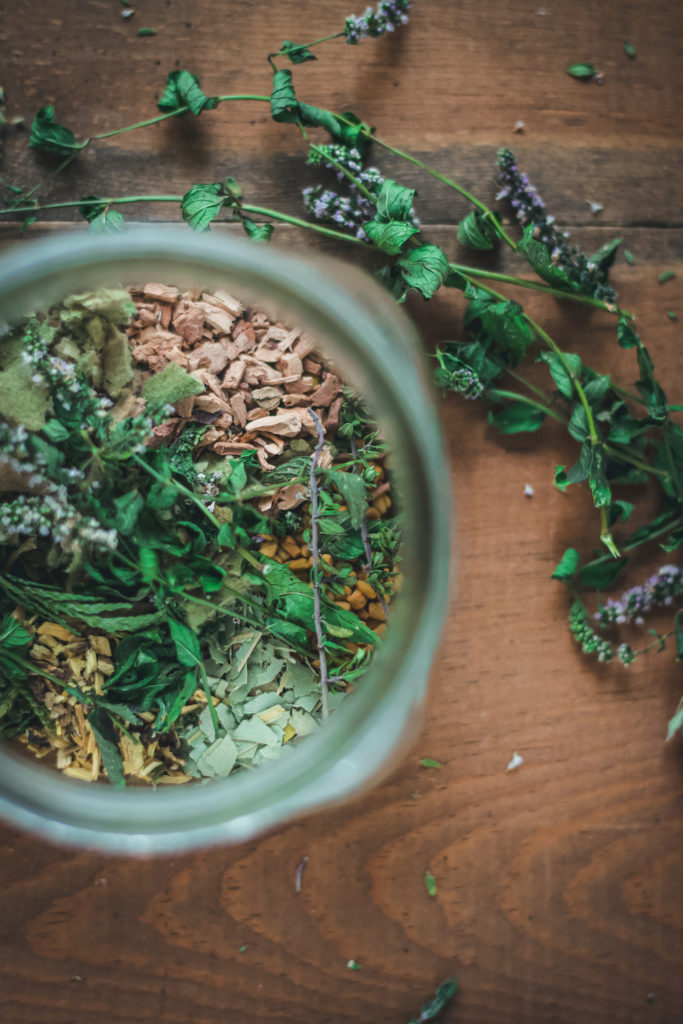
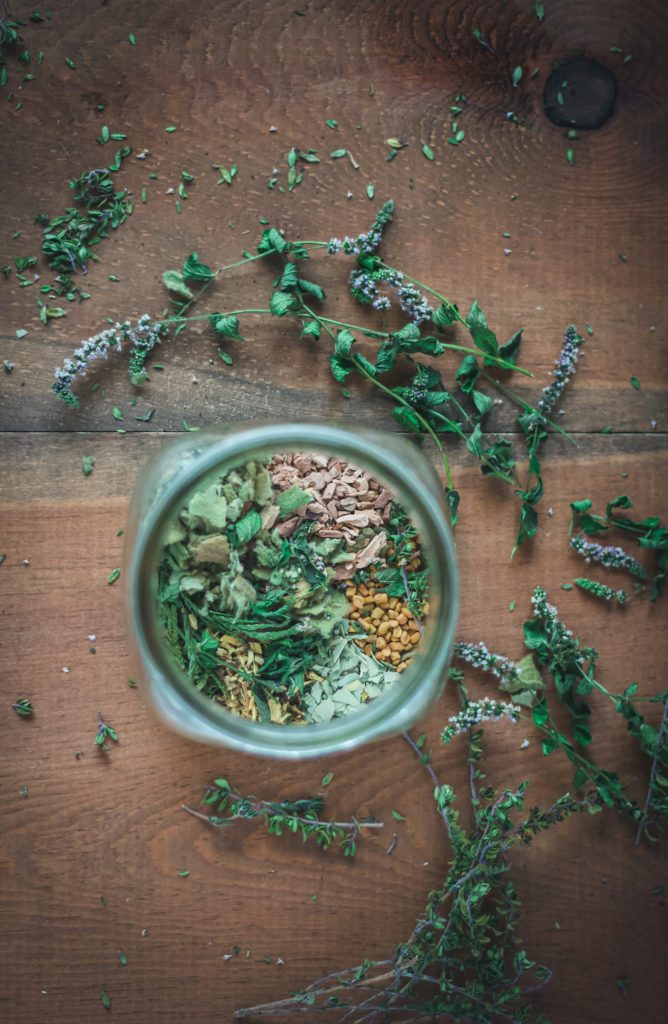
Demulcent and Aromatic Lung Tea
- 1 heaping tablespoon Mullein
- 1/2 cup Marshmallow leaf or root tea- steeped as a cold infusion* separately and poured in to the tea after it is strained.
- 1 tablespoon Mint
- 1/2 teaspoon Eucalyptus
- 1/2 teaspoon Cedar
- a couple springs or scant 1/2 teaspoon Thyme
- 1/2 teaspoon Fenugreek
- 1/2 teaspoon Licorice
Add the herbs to a pint jar (2 cups/16 oz). Cover with boiling water, stir, steep covered for 20 mins or more.
Strain with a fine strainer to avoid itchy Mullein hairs in your tea (although I hardly ever strain my mullein tea and never have had a problem, perhaps this is because I often use whole dried Mullein, or barley ripped? Or maybe I’ve been lucky?).
Add 1/2 cup Marshmallow tea. Drink 1-2 pints a day.
*Marshmallow Cold Infusion Directions
- Mix about 2-3 TBLS of Marshmallow Root or Leaf to a pint jar. Cover with tap water.
- Let steep for at least 4 hours, overnight is even better. Strain.
- Drink 1/2 cup at a time. More than that may be too diuretic for the small minority of people, if this is you slowly work up to drinking more to test it. I find Marshmallow Root to be less diuretic than the leaf.
Refrigerate the tea on hot or even warm days. Marshmallow leaf in particular ferments quite quickly like Milky Oats or Comfrey…all those starches break down pretty quickly, I guess.
This tea was inspired by one of the first general lung tea I used many years ago, from David Hoffmann.
Hoffmann has the demulcent three lung tonics – Mullein, Coltsfoot and Marshmallow plus aromatic Anise seed, which is wonderful for helping to thin, mobilize and expectorate mucus.
I have always preferred to make Marshmallow as a cold infusion, although I have in a pinch steeped it hot with other herbs. And I add a pinch of Licorice because it too is demulcent, and adds to the kind of bland flavor.
This is is a simple base to start with.
I may add in Thyme, Hyssop, or Horehound.
Or I may add in Elecampane and Angelica even though these are roots and not best for an infusion.
We herbalists have our quirks just like anyone else. I will more often break the decoct roots than the cold infuse Marshmallow one. Mostly because I can taste and feel the Elecampane and Angelica working.
David Hoffman’s Demulcent Tea for Acute Dry Cough
- Mullein
- Coltsfoot
- Marshmallow
- Anise Seed
Mix equal parts. Infuse 2 teaspoons of dry herb combination in 1 cup of boiling water for 20 mins, drink hot three times a day.
I do not have Coltsfoot on hand, but if you have access, they are a worthy addition.
Emotional Support for the Lungs and whole Being
There are so many herbal options for mental-emotional-spiritual support. I will go over just a few for simplicity sake.
Flower Essences
If you have Flower Essences on hand, use whatever you are drawn to to support how you are feeling.
Yarrow based essences are always a good starting place when a lot is going on with the world or environment around you. Yarrow offers protection.
If you have access to a health food store, see which line of FE they carry and begin to matchmake from there. Usually places with have Bach Flower and/or Flower Essence Society. At the very least some places will have Bach’s Rescue remedy, which you can get as a spray which is nice right now.
Herbal Oiling
A daily herbal oil massage or twice a day self massage spot treatment of a particular tense area can do wonders. The herbs really hold us, and putting them on our skin gets them into our nervous system in a very direct yet gentle way. St. John’s Wort, Lavender, Mugwort, Plantain, Comfrey, Marshmallow, Ginger or any other herbal oils you have on hand is nice.
I like to massage in an herbal oil and follow with an application of a nerving or sedative (like a sleep formula) tincture. Very therapeutic.
Epsom Salt Bath
Epsom salt baths deliver quenching Magnesium from the outside in. Softening to the skin, too. Definitely keeps the tension load of the body from building up. I let my kids have a little Epsom salts in their bath too, they get some in little pots and pans that they mix up and play cooking with in the bath. Never ceases to entertain them.
Spiritual bathing practices are very nice right now for clearing off excess emotions, stress and collective psychic pressure. Release the accumulated emotions, and the weight of them, even if for a few minutes.
We can’t always take the load off because it is essential to take care of our and other’s safety. But we can put down the pack for the length of a bath…and let when we don’t need was down the drain.
Our brains get a little leaky when are in survival mode. Regular clearing techniques and tending of boundaries help us maintain our integrity with out spinning off into doom land.
Emotion/Stress Herbs
- Tulsi – mild aromatic adaptogen to help with general nervous system building
- Rose – protects the heart so it can open, helps hold grief, and regulates the emotions
- Chamomile – when stress gets into the belly and turns into anxiety, as calming as Valium
- Lavender – really calming to the mind and vents off stuck emotions to let us feel suuuuper calm
- Melissa – the bright and sunny gladdening herb, when emotions get stuck deep in the gut
- Mint – overall relaxing nervine, mood lifter (great with black tea) takes off tension, refreshing
- Thyme – another overall parasympathetic nervous support, a strong lung and breathing affinity
- Catnip – stress and anxiety going in the gut, for when we get mean and crabby, mild mind shifter
- Motherwort – opens constricted heart and emotions, helps us laugh when we feel super crabby
- Wood Betony – deep sadness, wounding, mood instability held within the gut
- Skullcap – worn to a frazzle, super tense body, wired and tired
- Passionflower – helps with transitions and overthinking for highly sensitive stimulated people
- St. John’s Wort – direct action on the nerves themselves, regulating to the digestive system
- Hawthorn Leaf, Flower and Berry – like Rose protects the heart for emotions and deep healing
- Linden – angelic like research for first line grief support, cultivates appreciation and gratitude
There’s many more. But this is a good place to start.
Heart Holding Belly Centering Tea
- Linden
- Hawthorn
- Rose
- Chamomile
- St John’s Wort
- Lavender
- Thyme
The top three all address the opening the Heart Center and creating a protected, safe place for our emotions to be seen, heard and felt. Right now these can really help, we need reminders of being protected and safe.
Chamomile and St. John’s Wort enter the Solar Plexus. The bring us back to our center, and from that we can be steadied. They both calm us in anxious states, and digest the experiences in and around us.
St. John’s Wort and Lavender clear off crabby moods. From a Chinese medicine perspective, they both move Liver Qi Stagnation.
There are actual environmental toxins we need to process when the air is full of particulate, true. But regardless of the air quality of your home, the stress levels are high. Stress and emotions of any kind are exacerbated by being stuck inside. The Liver, Gallbladder and Spleen/Pancreas have a lot to digest and process.
Anytime we feel trapped, the Liver is going to feel it. The Liver likes to be free flowing. It needs to be able to ramble and move as it feels inspires, upward and outwards – St. John’s Wort and Lavender both help to do that.
Aromatic Thyme has a lung and breathing affinity, and is a general nervous system relaxer but not in a sleep-inducing way.
The tea pictured here is Linden based, with Rose Hips, Motherwort, Mullein, White Horehound and spices of Licorice, Cinnamon and Ginger.
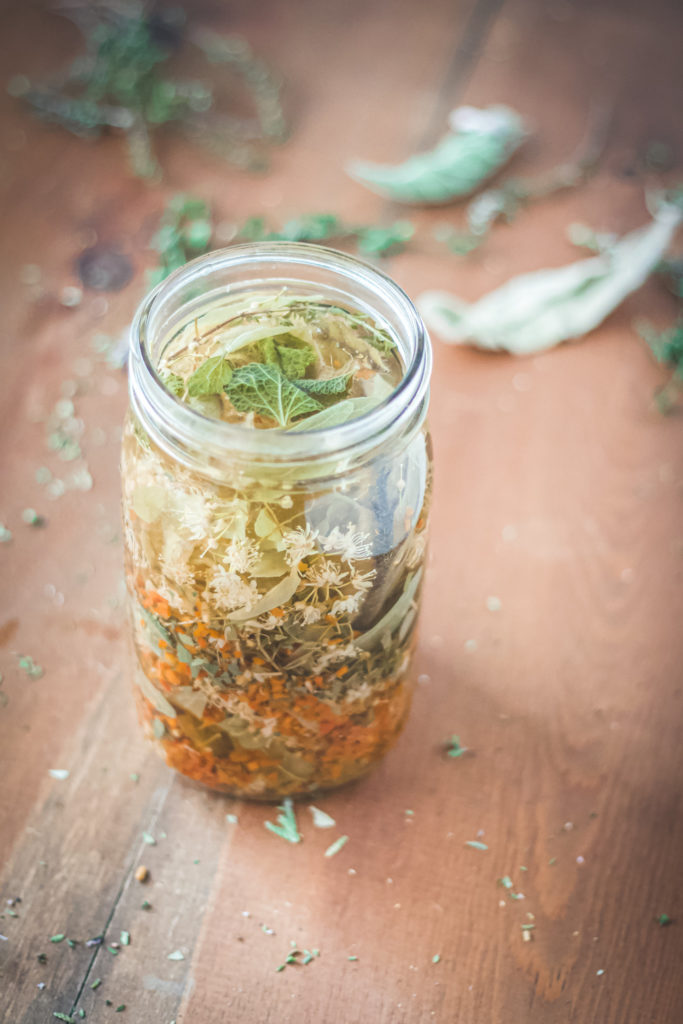

Long Emergency Support – Adaptogens and Nutritive Tonics
In recent years I have moved more towards nervines instead of adaptogens. I still use adaptogens when it is needed, and when their specific medicine is indicated.
During COVID and the BLM movement coming to the forefront, I have still personally tended towards nervines and nourishing infusions like Nettle, Alfalfa and Milky Oats instead of adaptogens.
And again, they have been helpful. Nervines help us regulate when a lot of life’s stresses are coming at us.
Adaptogens help when those life stresses coming at us have started to wear us down physically, like in our cell tissue. Our endocrine system is struggling under the weight of life.
A couple weeks ago I started to lean on adaptogens a little more, however. This is mostly because I can feel that many of the people I know and work with are getting a little more physically worn down and need a building up of reserves now. This is for two reasons (I think).
One is because where we live in Portland, school is at-home distance learning only – which is great for keeping the curve down, but completely extra stressful for parents.
Secondly, the political stress and upcoming elections are really feeling heavy (Could this also be Mars funny business too?!).
It has felt like the last straw for many. It pushed them over the edge of what they could handle.
Now this…sheltering in place due to extremly bad air quality, the possible threat and reality of evacuation for some, and the grief and loss of fire destruction.
It is a lot. It feels like shock. People feel trapped, understandably.
There are a few decent products I have seen at the stores that I sometimes encourage people to check out. I do not have affiliation with any products. I do not advocate that people use products over herbs, but it is often easier to have someone go to a store rather than me make them herbs or drive all over time gathering herbs from the different herb shops (since COVID there herbs shops are often out of stock).
The only reason I got a couple of these products is because I found them on sale at Natural Grocers. only $6-$9, over 50% off. The mushroom powder was $13. This is cheaper than I could buy wholesale.
Gaia Herbs and Mushrooms Daily
Adaptogens are indicated when the demands of life are greater than our body and being can tolerate. Generally they increase our ability to deal with nonspecific stress. Working out of circadian rhythm (shift work), overworking, working faster and stronger, sleep deprivation, trauma – these are the sort of stressful experiences that adaptogens have been used for.
There are so many. Pick your favorites that are energetically matched for you, as some are quite stimulating and warm, Rhodiola for example.
Pick the milder ones that are readily cultivated first like relaxing and strengthening Ashwaganda, slow and steady Eleuthero, immune balancing Astragalus and easily harvested even in the city Turkey Tail.
Leave the kingly herbs like Reishi, the Ginsengs and Cordyceps (although these too can be found cultivated) to times when you really need them, and avoid the native Spikenard and Devils Club unless they can be cultivated in non-extractive colonial ways.
My personal favorites are Astragalus, Shiitake, Eleuthero and Schisandra, because I have a lot of immune system stuff going on.
Nutritive Herbal Tonics
Nutritive tonics are a good source of bioavailable nutrients and constituents for any time of the year and any time of our life.
During stressful times, however, we deplete our nutrient stores much more quickly. Daily bathing in botanicals (figurative and literal) can help keep us afloat, thriving even.
Some nutritive tonic herbs for long-infusions that come to mind are:
- Milky Oat and Oat Straw – Mineral rich. Milk Oat as a nervous restorative. Oat Straw for a grounding, mineral-rich daily drink.
- Raspberry Leaf – A balanced sweet and sour blend of Yin nourishment and nutrient tonification as well as a lifting, astringent action to restore tissue integrity. Womb affinity.
- Alfalfa – Mineral rich like Oat straw with restorative properties. Emphasis on people who need convalescence – those who have been worn down by an acute illness, chronically ill or stressed for a long time.
- Rose Hips and Fenugreek – More dense and food like: Both are nice additions to nourish the digestion plus support endocrine functions (Fenugreek) and for extra Vitamin C and anti-oxidants.
I am not very familiar with Horsetail so I leave it out.
Nettles is an excellent nutritive tonic, but I am not confident this this plant would not dry us out a little too much. I will have to try it and let you know.
Gingko is one of the most detoxifying plants and may be considered a tonic, but I am in a phase of not using this plant.
How long? How Much? Do They Really Work?
Well-chosen adaptogens and tonics can boost our overall wellbeing, but it can take a while for most of us.
6 weeks is the minimum for adaptogens as well as nutritive tonics. 3 months – 6 months is even better. Even a year.
If you purchase some sort of tincture, powder or phyto-caps, follow the directions on the container.
These products will not last long (unless you get a big bag/jar of powder or a 4 ounce tincture), so stock up if possible. If you find some that you really like, buy in bulk and save.
Even though these two categories of herbs are best in the long term, they still help us in the now by lending their support to our daily ability to adapt and feel nourished.
In Closing
Best wishes to you all. Be gentle and kind to yourself even if things feel too much. We can be overwhelmed and supported at the same time.
Take good care,
Celia

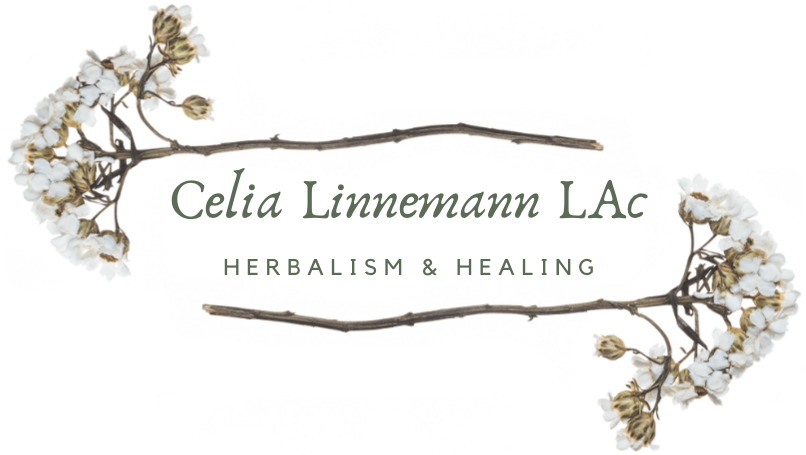
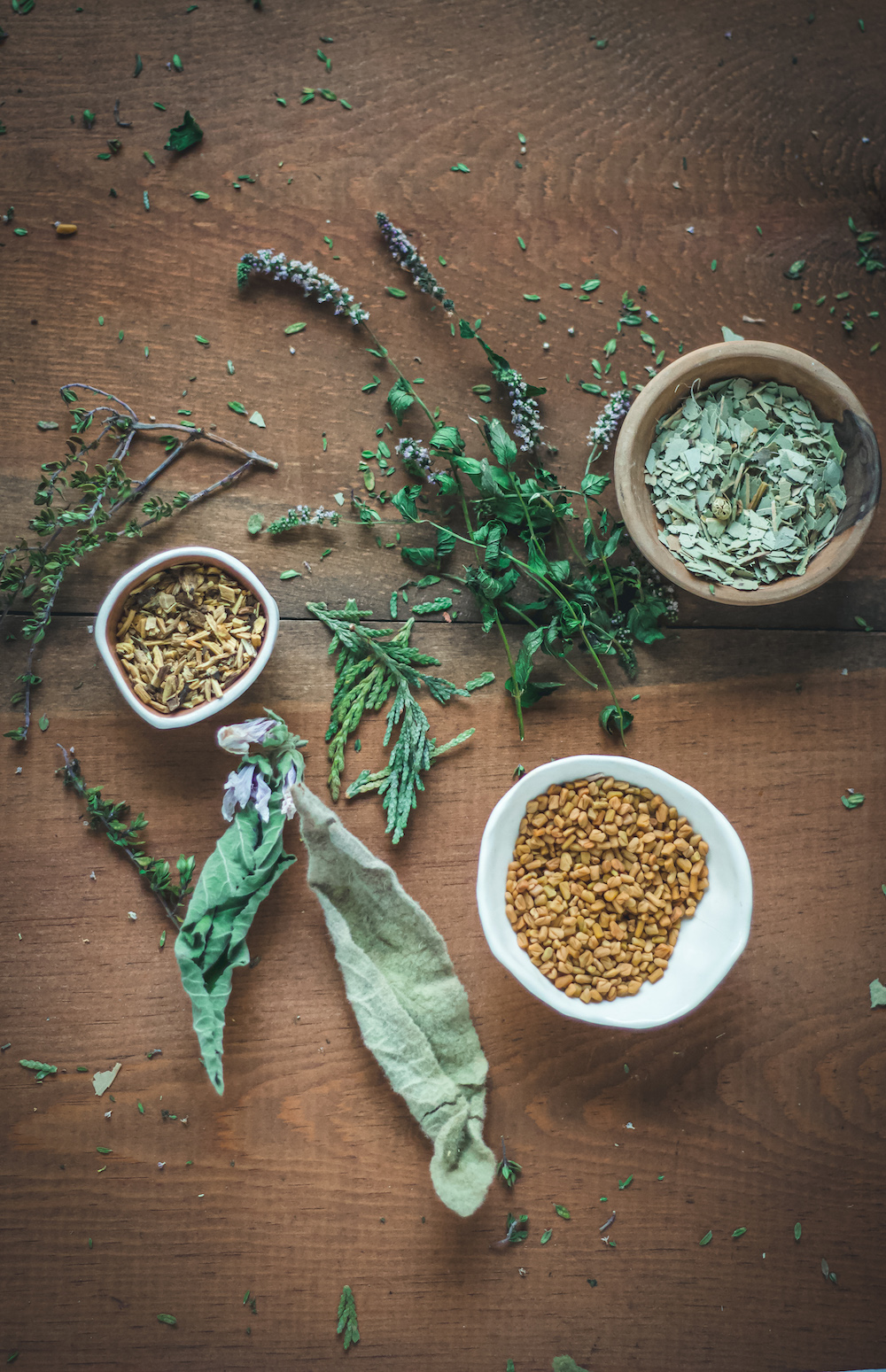

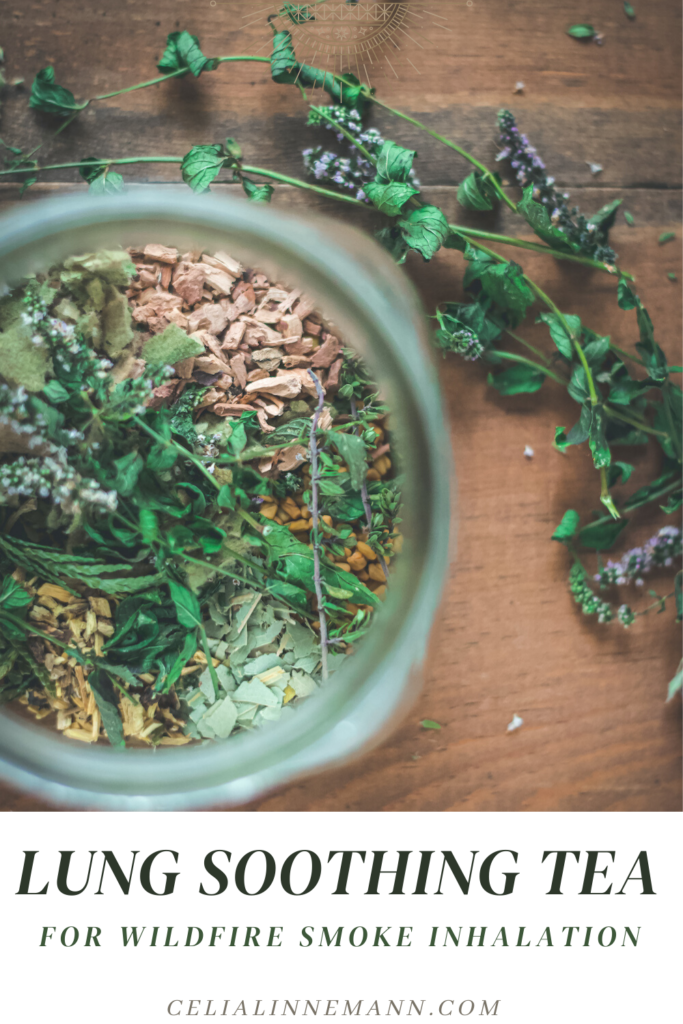



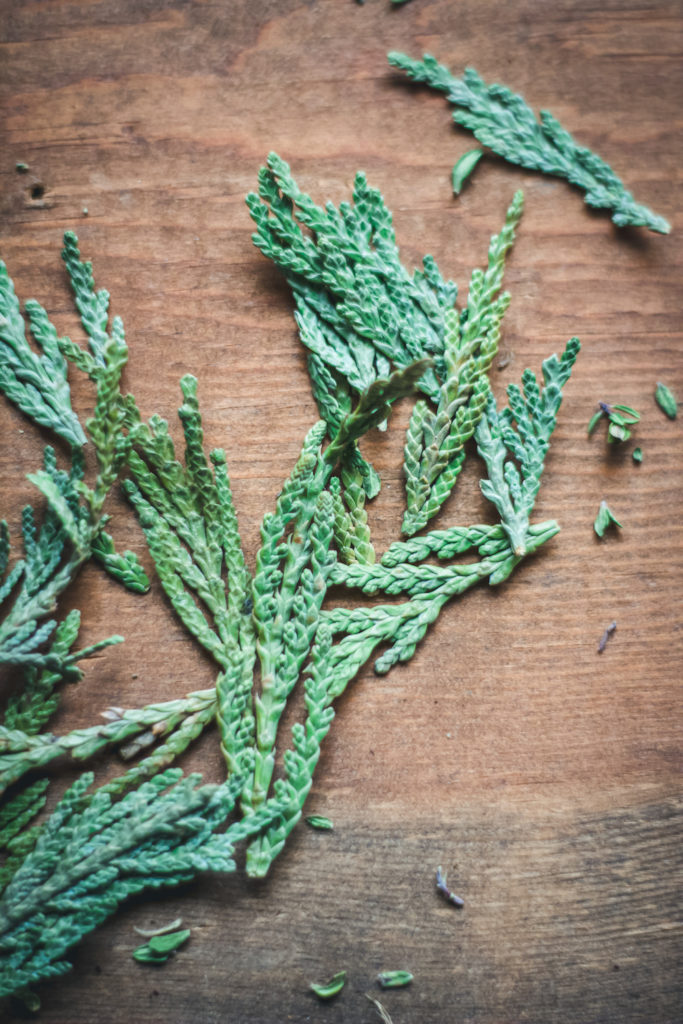
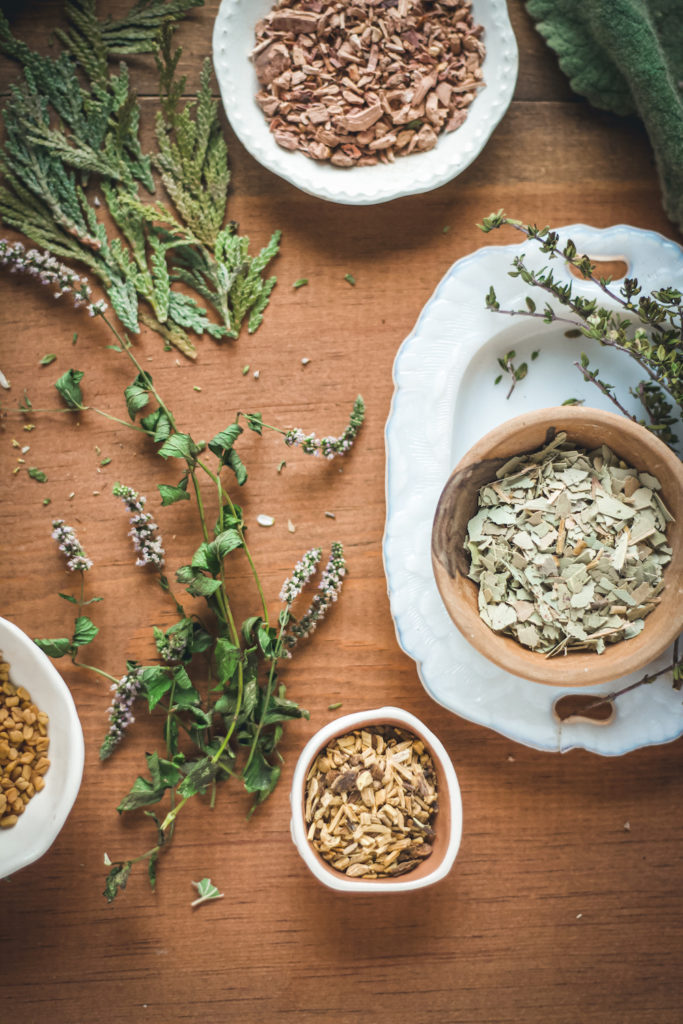

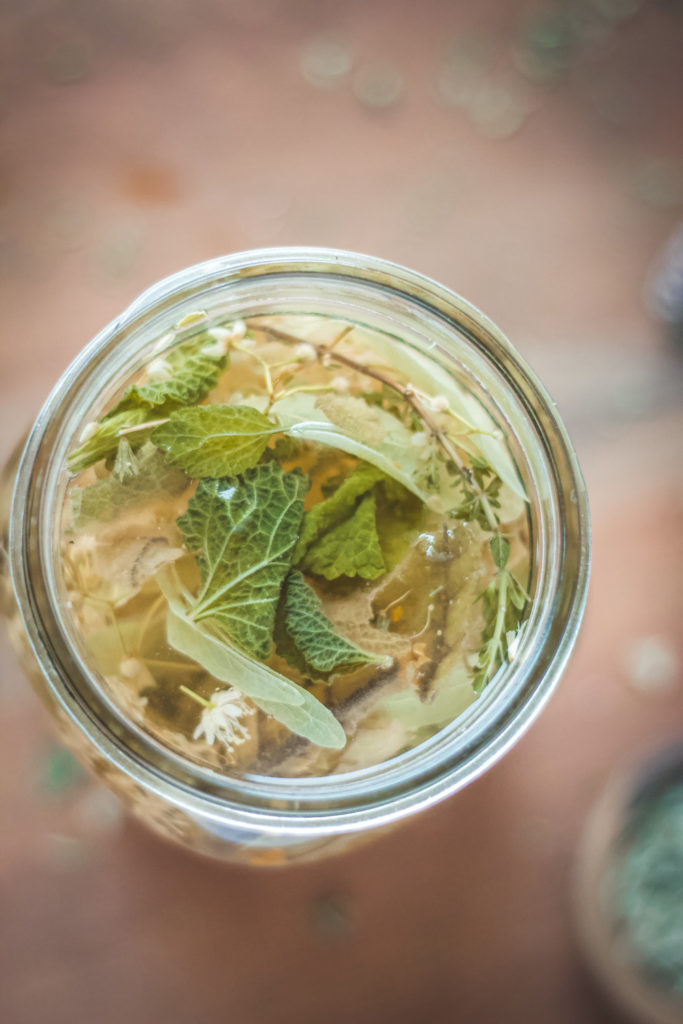


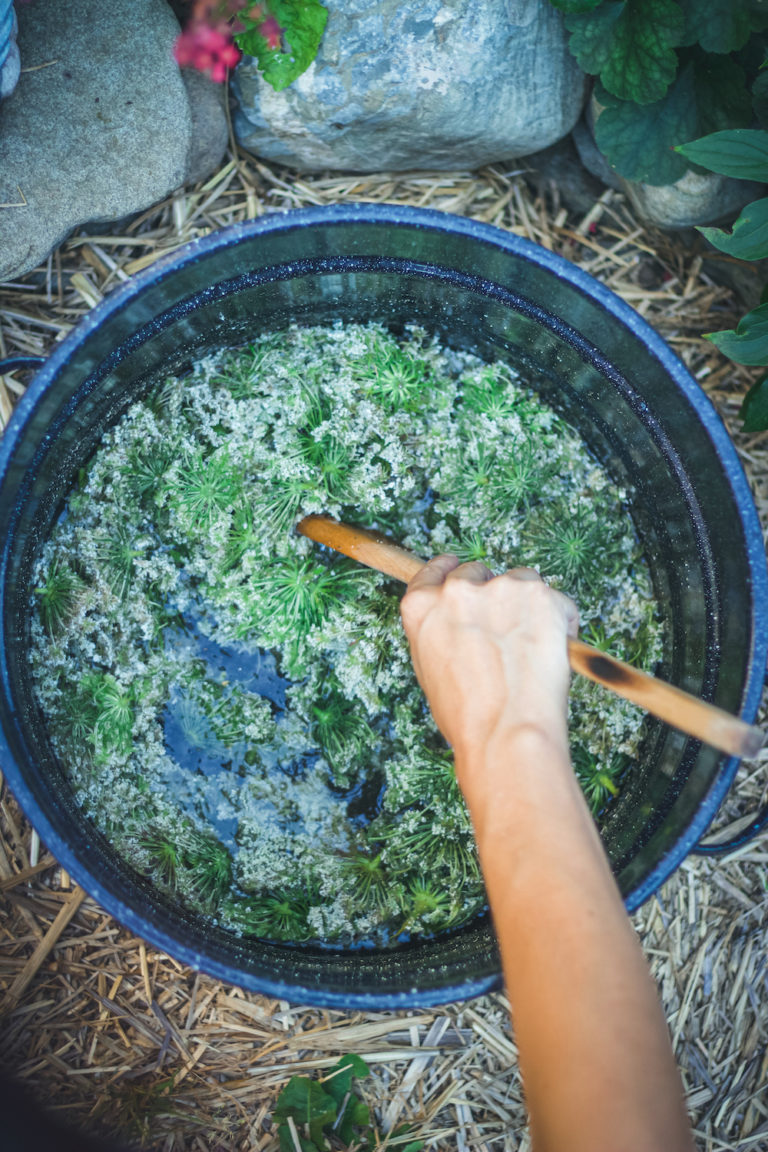

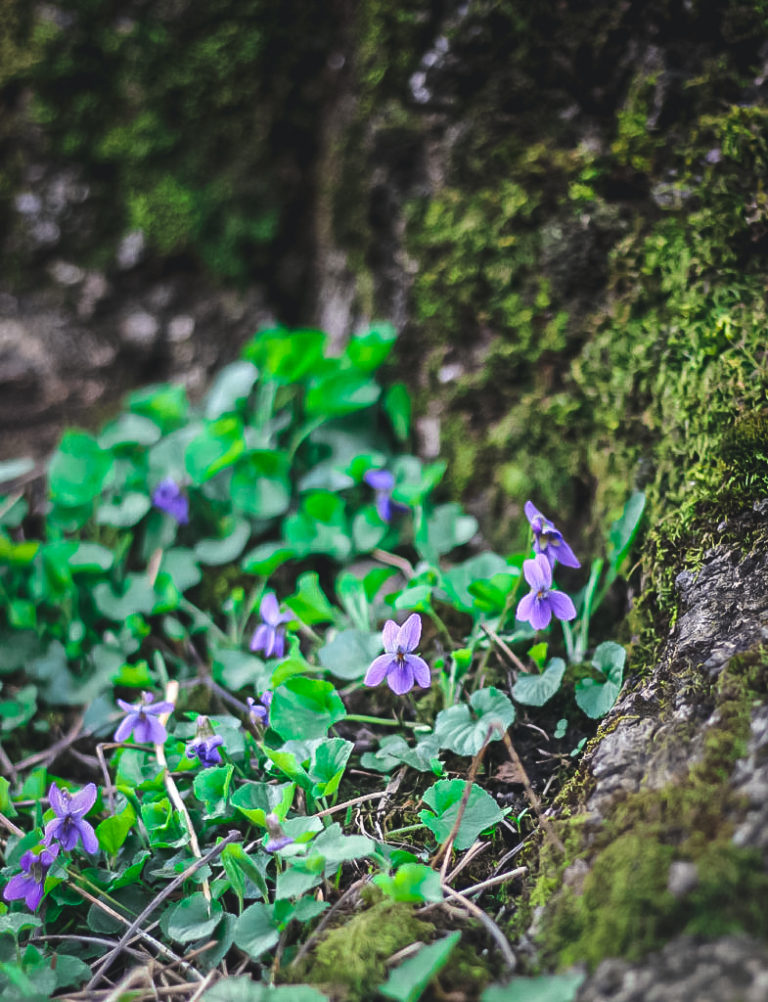


3 Comments